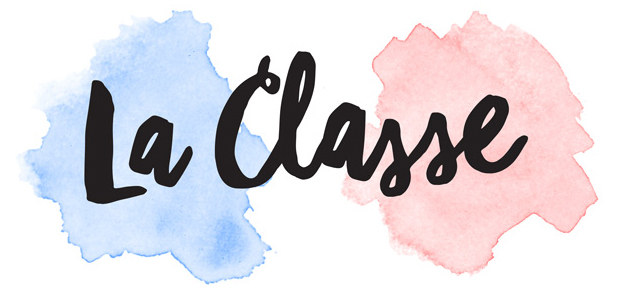Raising bilingual children in a foreign country, with a focus on teaching them the French language, presents a unique set of challenges for parents. When children are immersed in a linguistic and cultural environment different from their native one, the process of language acquisition becomes complex. In this article, we will explore the intricacies of these challenges, providing a comprehensive understanding of the hurdles parents face when raising bilingual children abroad.
Cultivating a Supportive Bilingual Environment
Peer Influence and Social Integration
Children may prefer to speak the majority language to fit in with local friends, potentially neglecting their second language. Encourage playdates and activities with bilingual children or children from the same linguistic background. Emphasise the benefits of being bilingual and the importance of maintaining both languages. Look for international schools or bilingual playgroups where children can interact with peers who share their language background.
Supportive Communities
Being part of supportive communities comprising other bilingual families can offer a sense of belonging and understanding. These communities can provide a safe space where parents can share their experiences, seek advice, and find emotional support. They offer opportunities for children to interact with peers who are also on a bilingual language journey, creating an environment for practical language practice through playdates, gatherings, and social activities.
Consistency is Key
Consistency is the backbone of successful language acquisition. Parents play an important role in creating an environment where French is consistently spoken. This means consciously integrating French into daily life, from conversations at home to activities and routines. Consistency not only reinforces language skills but also helps children feel comfortable using French in various situations. Over time, it becomes a natural part of their communication repertoire rather than a foreign concept.
Nurturing Motivation
Patience and Encouragement
Encouraging children to embrace their bilingualism is a gradual process that hinges on patience and positive reinforcement. Parents should refrain from pushing their children to reach language milestones at an accelerated pace. Instead, they should cultivate an environment where language acquisition is a joyful and stress-free experience. By offering words of encouragement and celebrating even the smallest language achievements, parents can bolster a child's self-assurance in their language development journey.
Maintaining Motivation
Maintaining a child's motivation to learn and use French is an ongoing challenge. Children may encounter moments of frustration or disinterest along the way. To counteract this, parents can implement strategies such as rewards and recognition. Small incentives for language milestones achieved, like a special treat or extra playtime, can provide positive reinforcement. Acknowledging a child's efforts and achievements in front of family and friends can boost their self-esteem and enthusiasm for language learning. These tactics can play a role in sustaining a child's interest in French.
Resources for Language Acquisition
Immersive Experiences
Immersive experiences provide a hands-on approach to learning French. Enrolling children in French-speaking schools or involving them in cultural and social events during the holidays in a French-speaking country exposes them to real-life situations where they must use the language. This kind of immersion can accelerate language acquisition by making it relevant and practical. It allows children to experience the cultural and social aspects of the language firsthand, deepening their connection to French.
Multilingual Resources
Educational resources tailored for bilingual learning are readily available. Books, apps, and online courses designed for children offer interactive and engaging ways to build language skills. These resources can be invaluable tools to supplement the learning process, making it more enjoyable and effective for children. With the help of multimedia resources, children can explore the French language in a fun and interactive way, enhancing their vocabulary, grammar, and pronunciation while fostering a love for the language.
The Role of Technology
Incorporating technology into language education can be a valuable asset when teaching children French. Interactive language learning applications, educational games, and age-appropriate French-language videos serve to make the language acquisition process more engaging. These resources complement conventional teaching approaches and have the power to captivate children's interest, thereby rendering the language-learning journey enjoyable and interactive.
Tailoring Language Learning
Age-Appropriate Learning
Different age groups require tailored language learning approaches. Younger children have a remarkable ability to absorb languages naturally, much like a sponge soaking up water. For them, language acquisition can happen through everyday interactions, such as play and simple conversations. In contrast, older kids may benefit from more structured lessons, as their cognitive development allows them to grasp complex grammar rules and expand their vocabulary systematically. These age-specific approaches ensure that language learning aligns with the child's developmental stage.
Professional Guidance
When it comes to teaching children a new language, especially in a foreign environment, professional guidance can make a significant difference. Language specialists and tutors are experienced professionals who understand the intricacies of language acquisition in children. They can offer structured lesson plans, assess a child's progress accurately, and tailor teaching methods to suit individual learning styles. Their expertise ensures that children receive the most effective language education, enhancing their proficiency in French.
Conclusion
Raising bilingual children abroad, especially when it involves teaching them the French language, comes with its set of challenges. With a well-thought-out approach, consistency, and the right resources, parents can successfully navigate these obstacles. Embracing bilingualism offers children the gift of language, a broader worldview, and a deeper appreciation for different cultures. It's a journey worth embarking on, one that can enrich their lives in countless ways.







